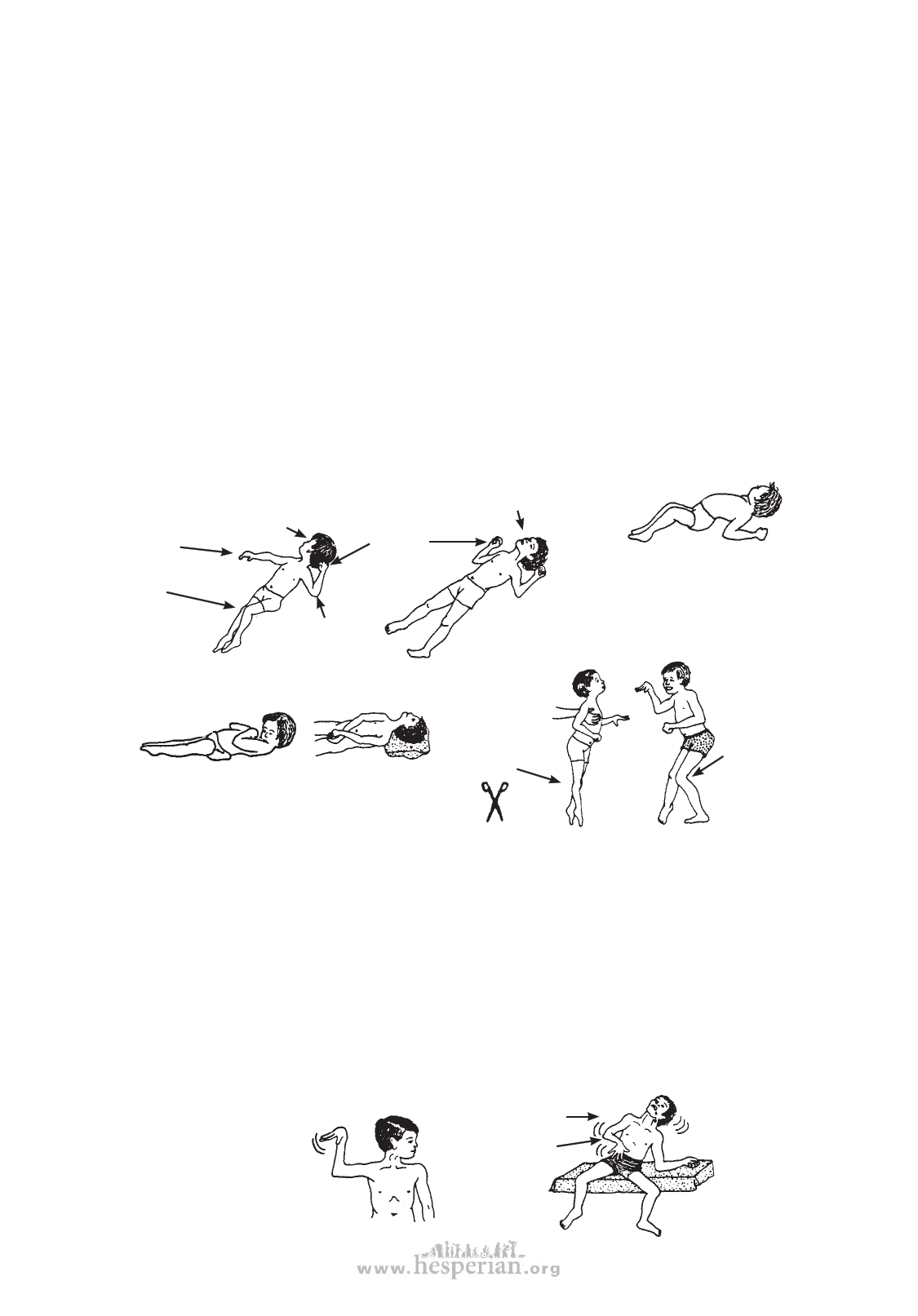
CEREBRAL PALSY
TYPES OF CEREBRAL PALSY
Cerebral palsy is different in every child. Different experts have worked out
different ways of describing it. But do not worry about labeling a child’s particular type
of cerebral palsy. This does not usually help his treatment.
It is helpful, however, to recognize 3 main ways that cerebral palsy can appear. In a
particular child, it may appear in one or another of these ways—but usually in some
sort of combination.
89
1. MUSCLE STIFFNESS OR ’SPASTICITY’
The child who is ‘spastic’ has muscle stiffness, or ‘muscle tension’. This causes part
of his body to be rigid, or stiff. Movements are slow and awkward. Often the position of
the head triggers abnormal positions of the whole body. The stiffness increases when
the child is upset or excited, or when his body is in certain positions. The pattern of
stiffness varies greatly from child to child.
TYPICAL SPASTIC POSITIONS WHEN LYING ON THE BACK:
This arm may
stiffen
straight out.
Legs
stiffen
and knees
press
together.
Head twists
to one
side.
Fist grips
thumb.
This arm
stiffens
bent.
Less commonly the
head and shoulders may
stiffen forward . . .
. . . or the arms may
stiffen straight across
the body, with the
head pressed back.
Shoulders and head
press back.
Legs turn in.
When you
try to stand
the child the
legs often
stiffen or
cross like
scissors.
Stiffness, with the knees bent or with
legs separated, occurs more commonly
in the child with spasticity and athetosis
combined (see below).
The child who
learns to walk
may do so in a
stiff, awkward
position, with
the knees
pulled together
and bent. Feet
often turn in.
2. UNCONTROLLED MOVEMENTS OR ‘ATHETOSIS’
These are slow, wriggly, or sudden quick movements of the child’s feet, arms, hands,
or face muscles. The arms and legs may seem jumpy and move nervously, or just
a hand or the toes may move for no reason. When he moves by choice, body parts
move too fast and too far. Spastic movements or positions like those shown above may
continually come and go (constantly changing muscle tension). His balance is poor and
he falls over easily.
Most children with athetosis have normal intelligence, but if the muscles needed for
speech are affected, it may be hard for them to communicate their thoughts and needs.
Typical athetoid arm and
hand movements may be as
a regular shake or as sudden
‘spasms’. Uncontrolled
movements are often worse
when the child is excited or
tries to do something.
poor balance
arm and hand
movement
This child has
severe athetosis.
disabled village children